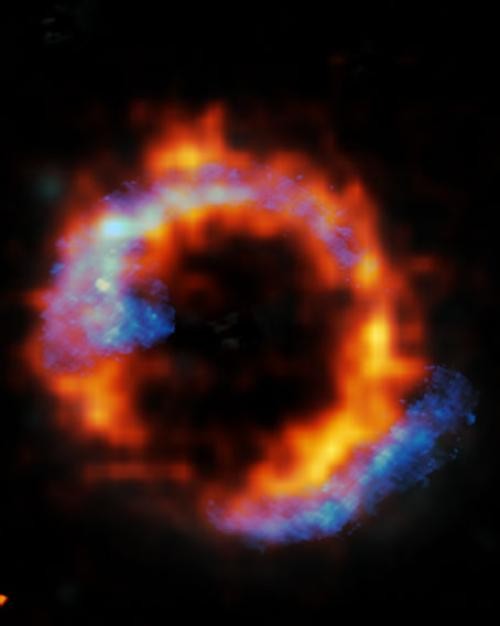News directly from Cornell's colleges and centers
Surprising ring sheds light on galaxy formation
By Linda B. Glaser
The question of what triggers the extremely rapid star formation within Hyper Luminous Infrared Galaxies (HyLIRGs), as yet unknown, is of much interest to guide our understanding of the formation and evolution of galaxies in the Universe. A new photo released by the European Southern Observatory shows a HyLIRG 10,000 times brighter than our Milky Way (in infrared light) – the distant galaxy PJ0116-24 – and was released in conjunction with a newly published paper in Nature Astronomy that sheds light on its formation.
Previous studies suggested that such extremely bright galaxies must result from galaxy mergers. These galaxy collisions are thought to create dense gas regions in which rapid star formation is triggered. But isolated galaxies could also become HyLIRGs via internal processes alone, if star-forming gas is rapidly funneled towards the galaxy’s center.
In the paper, “Detailed study of a rare hyperluminous rotating disk in an Einstein ring 10 billion years ago,” on which Cornell astronomer Amit Vishwas, Ph.D. ’19, is a co-author, observations from ESO’s Very Large Telescope (VLT) and the Atacama Large Millimetre/submillimetre Array (ALMA) were combined to study the motion of gas within PJ0116-24.
ALMA traces cold gas, seen in the photo in blue, whereas the VLT, with its new Enhanced Resolution Imager and Spectrograph (ERIS), traces warm gas, shown in red. Thanks to these detailed observations, the international research team discovered that the gas in this extreme galaxy was rotating in an organized fashion, rather than in the chaotic way expected after a galactic collision –– a surprising result. This shows, said the researchers, that mergers aren’t always needed for a galaxy to become a HyLIRG.
Read the full story on the College of Arts and Sciences website.
Media Contact
Get Cornell news delivered right to your inbox.
Subscribe

